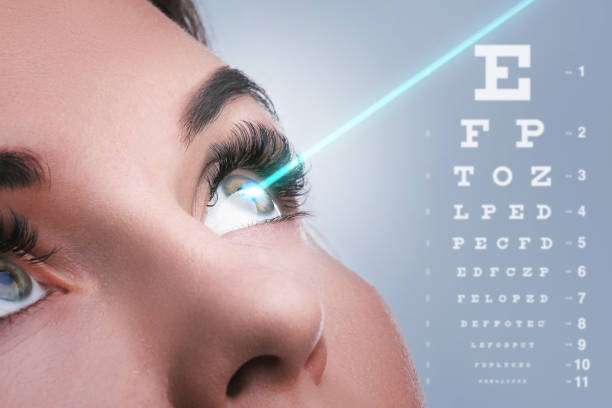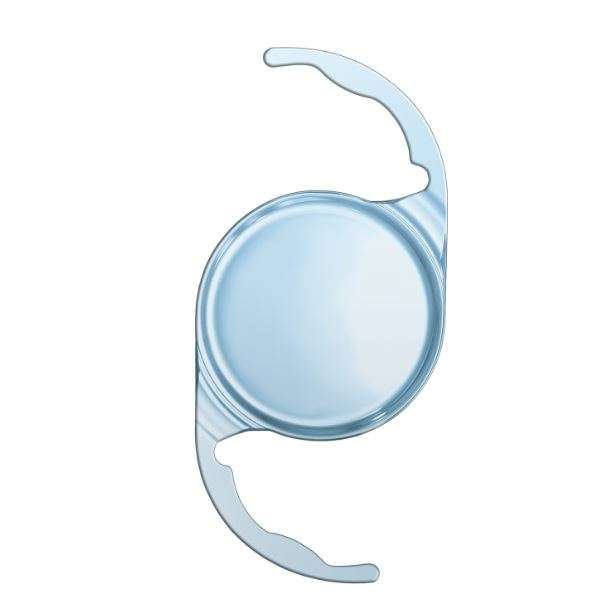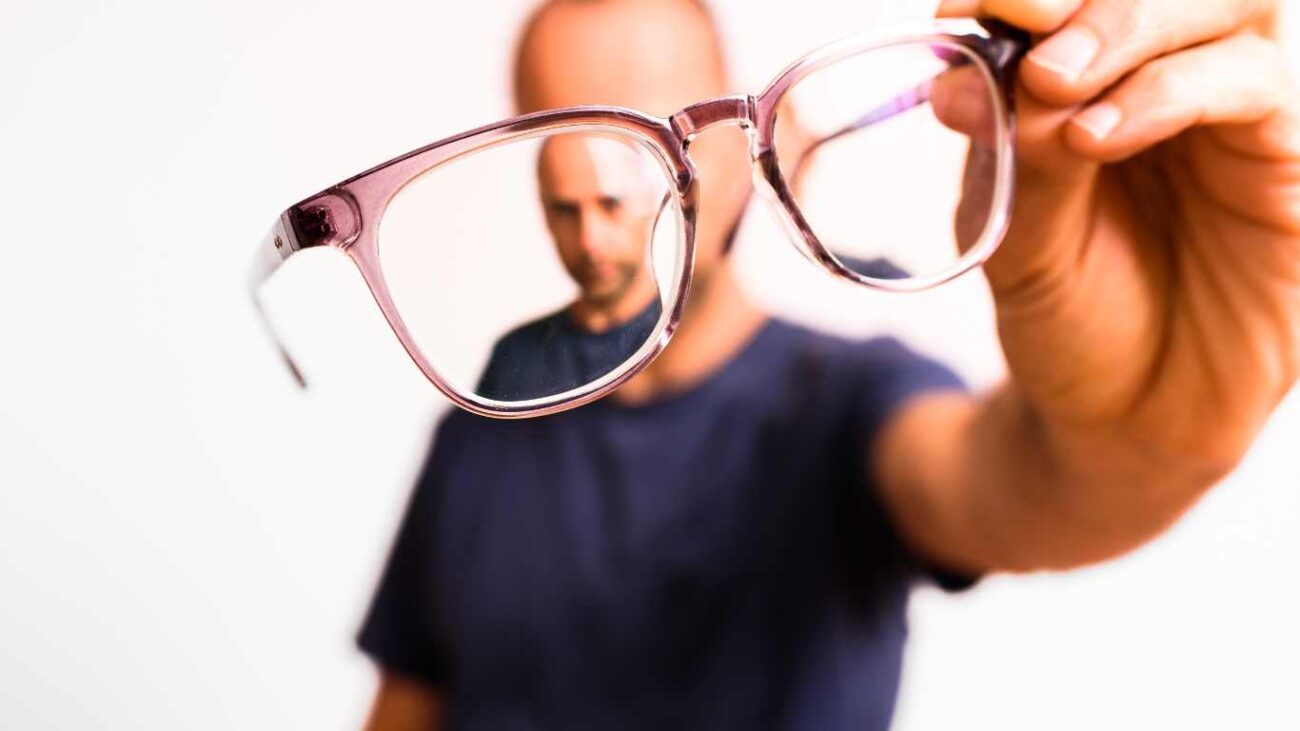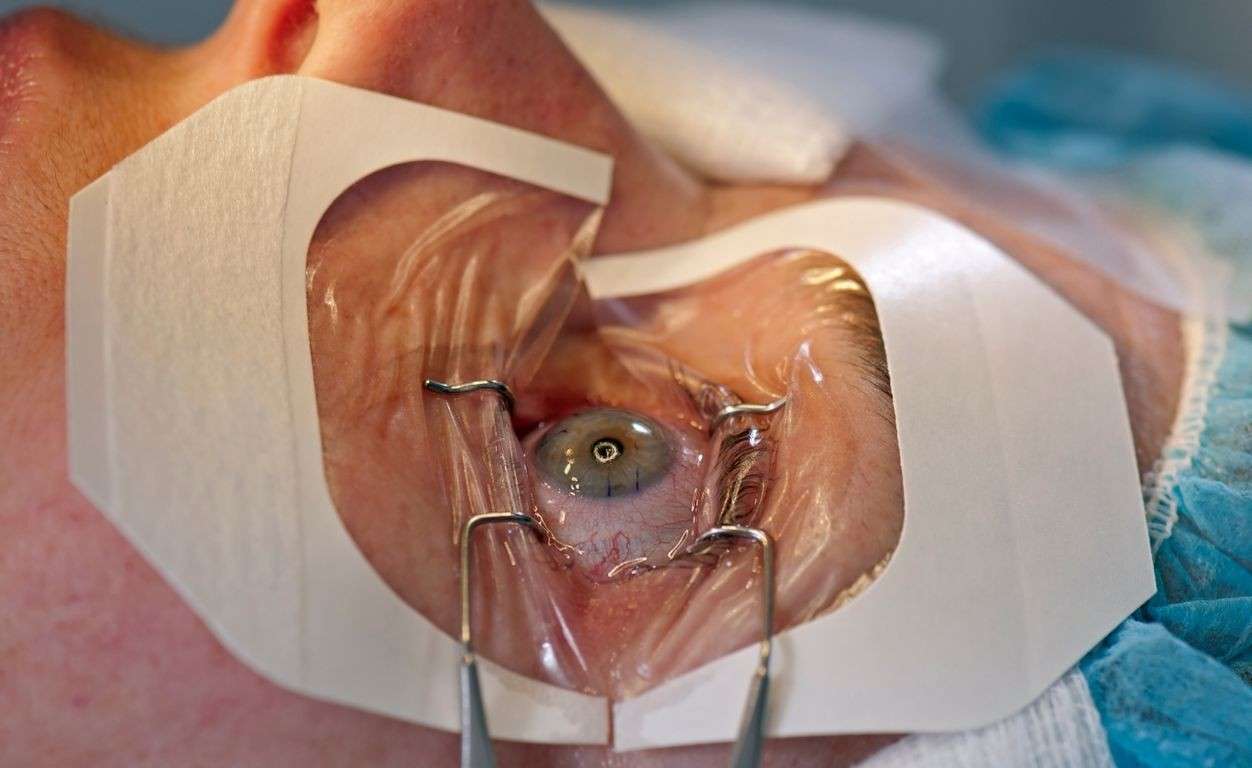What eye surgery is best for Astigmatism?
Astigmatism is a standard refractive error affecting how light enters the eye, causing blurred or distorted vision. It occurs when the cornea, the eye’s clear front surface, is irregularly shaped. Astigmatism can be corrected through various forms of eye surgery. Choosing the best one depends on factors such as the severity of astigmatism, the patient’s age and overall health, and the surgeon’s experience and preference.

In this blog, we will discuss the various surgical options for correcting astigmatism, their benefits and risks, and how to choose the best option for your needs.
1. LASIK (Laser-Assisted In Situ Keratomileusis) For Astigmatism:
LASIK is a popular and effective surgical option for astigmatism correction. In this procedure, a thin flap is created on the surface of the cornea, and a laser is used to reshape the underlying corneal tissue. The flap is then replaced, and the cornea is allowed to heal naturally. LASIK is a quick and painless procedure that typically takes less than 30 minutes, and the recovery time is relatively short. Most patients report improved vision within a few days of the surgery.
LASIK, or Laser-Assisted in Situ Keratomileusis, is a popular type of refractive surgery used to correct vision problems such as nearsightedness, farsightedness, and astigmatism. LASIK is a quick and safe procedure that can provide patients with improved vision and freedom from glasses and contact lenses. We will discuss the benefits and risks of LASIK, how the procedure is performed, and who is a good candidate for the surgery.
Benefits of LASIK
- Improved Vision: LASIK can provide patients with an improved vision that is often better than what is achievable with glasses or contact lenses. The procedure can correct nearsightedness, farsightedness, and astigmatism, providing clear and crisp vision.
- Quick Recovery: Most patients experience a quick recovery time following LASIK surgery, with many patients able to return to work or normal activities within a few days.
- Long-Lasting Results: LASIK provides long-lasting results, with most patients experiencing improved vision for many years after the procedure.
- Safe and Proven: LASIK is a safe and proven procedure that has been performed millions of times worldwide with a high success rate.
Risks of LASIK
- Dry Eye Syndrome: LASIK can sometimes cause temporary or permanent dry eye syndrome, which can cause discomfort and blurred vision.
- Glare and Halos: Some patients may experience glare, halos, or double vision following LASIK surgery, particularly at night.
- Overcorrection or under-correction: In some cases, LASIK may result in overcorrection or under-correction of vision, which may require additional surgery or the use of glasses or contact lenses.
How is LASIK Surgery Performed?
LASIK surgery is typically performed on an outpatient basis under local anesthesia. The procedure takes about 15-30 minutes per eye.
During the procedure, the surgeon will create a thin flap in the cornea using a femtosecond laser or a microkeratome. The surgeon will then use a laser to reshape the cornea, correcting the patient’s vision. Once the cornea is reshaped, the flap is repositioned and allowed to heal.
After the procedure, patients will be given eye drops to reduce inflammation and prevent infection. Most patients can return to their normal activities within a few days of the procedure.
Who is a Good Candidate for LASIK Surgery?
LASIK surgery is typically recommended for patients who are over the age of 18 and have a stable vision prescription. It is also a good option for patients with nearsightedness, farsightedness, or astigmatism who are looking for a long-term solution to their vision problems.
LASIK surgery may not be suitable for patients with certain eye conditions, such as glaucoma or severe dry eye syndrome. Patients who are considering LASIK surgery should undergo a comprehensive eye exam to determine if they are a good candidate for the procedure.
In conclusion, LASIK is a safe and effective option for correcting vision problems and providing improved vision without the need for glasses or contact lenses. While the procedure carries some risks, the benefits of improved vision and a quick recovery time make it a popular choice for many patients. If you are considering LASIK surgery, speak to your eye doctor to determine if it is the right option for you.
The benefits of LASIK include a high success rate, minimal discomfort during the procedure, and a quick recovery time. However, LASIK may not be suitable for everyone. It is not recommended for patients with severe astigmatism or thin corneas. It is also not recommended for patients who have certain eye conditions, such as dry eye syndrome or glaucoma.
2. PRK (Photorefractive Keratectomy) for astigmatism Correction:
PRK is another surgical option for astigmatism correction. This procedure involves removing the outer layer of the cornea, and using a laser to reshape the underlying tissue. The cornea is then allowed to heal naturally over time. PRK is a safe and effective procedure that can be used to correct moderate to severe astigmatism. It is also a good option for patients with thin corneas.
The benefits of PRK include a lower risk of complications compared to LASIK, and the fact that it can be performed on patients who are not suitable for LASIK. However, PRK has a longer recovery time compared to LASIK, and patients may experience discomfort and blurry vision during the healing process.
3. LASEK (Laser-Assisted Sub epithelial Keratomileusis) For Astigmatism:
LASEK is a variation of PRK that involves lifting a thin layer of tissue from the cornea instead of removing it. The laser is then used to reshape the underlying tissue, and the thin layer of tissue is replaced. LASEK is a good option for patients with thin corneas or those who are not suitable for LASIK or PRK.
The benefits of LASEK include a lower risk of complications compared to LASIK and PRK, and a shorter recovery time compared to PRK. However, LASEK may not be suitable for patients with severe astigmatism or those who require a significant amount of correction.
4. Implantable Contact Lenses (ICLs) For astigmatism:
ICLs are a non-surgical option for astigmatism correction. In this procedure, a small, flexible lens is implanted in front of the natural lens of the eye. The lens is designed to correct the shape of the cornea, improving vision. ICLs are a good option for patients with moderate to severe astigmatism who are not suitable for LASIK, PRK, or LASEK.
The benefits of ICLs include a quick recovery time, minimal discomfort during the procedure, and the fact that they are reversible. However, ICLs may not be suitable for patients with certain eye conditions, such as glaucoma or cataracts. ICLs are also avoided after a certain age.
Implantable Collamer Lens, commonly called ICL, is a type of refractive surgery used to correct a range of vision disorders. The procedure involves implanting a small, synthetic lens between the iris and the natural eye lens, allowing the lens to correct refractive errors and improve vision. We will discuss the benefits and risks of ICL, how the procedure is performed, and who is a good candidate for the surgery.
Benefits of ICL
- Corrects a Wide Range of Vision Disorders: ICL can be used to correct nearsightedness, farsightedness, and astigmatism, making it a versatile option for many patients.
- High-Quality Vision: ICL provides high-quality vision that is often better than what is achievable with glasses or contact lenses. The lens is designed to mimic the natural lens of the eye, allowing for clear and crisp vision.
- Reversible: Unlike other refractive surgeries, such as LASIK, ICL is a reversible procedure. If a patient’s vision changes or if they develop complications, the lens can be removed or replaced.
- Quick Recovery: Patients typically experience a quick recovery time following ICL surgery, with most patients able to resume normal activities within a few days.
Risks of ICL
- Infection: As with any surgical procedure, there is a risk of infection following ICL surgery. Patients will be prescribed antibiotic eye drops to reduce the risk of infection.
- Glaucoma: In rare cases, ICL surgery may lead to an increase in eye pressure, which can cause glaucoma.
- Cataracts: The presence of the ICL may increase the risk of developing cataracts in the future.
How is ICL Surgery Performed?
ICL surgery is typically performed on an outpatient basis under local anesthesia. The procedure takes about 15-30 minutes per eye.
During the procedure, the surgeon will make a small incision in the cornea and insert the ICL between the iris and the natural lens of the eye. Once the lens is in place, the incision is closed with sutures or self-sealing stitches.
After the procedure, patients will be given eye drops to prevent infection and reduce inflammation. Most patients can return to their normal activities a few days after the procedure.
Who is a Good Candidate for ICL Surgery?
ICL surgery is typically recommended for patients who are over the age of 21 and have a stable vision prescription. It is also a good option for patients with high levels of myopia, hyperopia, or astigmatism who are not suitable candidates for other types of vision correction surgery, such as LASIK or PRK.
ICL surgery may not be suitable for patients with certain eye conditions, such as glaucoma or severe dry eye syndrome. Patients who are considering ICL surgery should undergo a comprehensive eye exam to determine if they are a good candidate for the procedure.
In conclusion, ICL is a safe and effective option for correcting a range of vision disorders and providing high-quality vision. While the procedure carries some risks, the benefits of improved vision and the ability to reverse the procedure make it a popular choice for many patients. If you are considering ICL surgery, speak to your eye doctor to determine if it is the right option for you.
5. Cataract Surgery in the absence of a Cataract ( Clear Lens Exchange):
Clear lens exchange (CLE), also known as refractive lens exchange (RLE), is a surgical procedure that involves removing the natural lens of the eye and replacing it with an artificial intraocular lens (IOL). This procedure is similar to cataract surgery, but is performed on patients who do not have cataracts. Instead, CLE is often performed to correct refractive errors such as nearsightedness, farsightedness, or presbyopia.
In this blog, we will discuss the benefits and risks of clear lens exchange, how the procedure is performed, and who is a good candidate for the surgery.
Benefits of Clear Lens Exchange
- Improved Vision: Clear lens exchange can correct a wide range of refractive errors, including presbyopia, which is a common age-related condition that causes difficulty seeing close objects. The procedure can also correct astigmatism, resulting in improved vision and reduced reliance on glasses or contact lenses.
- Permanent Results: Unlike laser eye surgery, which may require touch-up procedures in the future, clear lens exchange provides permanent results. The artificial lens that is implanted during the procedure will not degrade over time, and the correction it provides will be permanent.
- Reduced Risk of Cataracts: Since the natural lens of the eye is removed during clear lens exchange, patients who undergo the procedure are at a reduced risk of developing cataracts in the future.
Risks of Clear Lens Exchange
- Infection: As with any surgical procedure, there is a risk of infection following clear lens exchange. Patients will be prescribed antibiotic eye drops to reduce the risk of infection.
- Retinal Detachment: There is a small risk of retinal detachment following clear lens exchange, particularly in patients who are highly nearsighted.
- Glare and Halos: Some patients may experience glare and halos around lights at night, particularly in the first few months following the procedure.
How is Clear Lens Exchange Performed?
Clear lens exchange is performed on an outpatient basis under local anesthesia. The procedure typically takes 15-30 minutes per eye, and patients can usually return home the same day.
During the procedure, the surgeon will make a small incision in the eye and use ultrasound to break up the natural lens. The lens fragments are then removed, and an artificial intraocular lens is implanted in its place. The incision is closed with sutures or self-sealing stitches.
After the procedure, patients will be given eye drops to prevent infection and reduce inflammation. Most patients can resume normal activities within a week or two of the procedure.
Who is a Good Candidate for Clear Lens Exchange?
Clear lens exchange is typically recommended for patients who are over the age of 50 and have a significant refractive error, such as high myopia or hyperopia. It is also a good option for patients with presbyopia who are not suitable candidates for other types of vision correction surgery, such as LASIK or PRK.
Clear lens exchange may not be suitable for patients with certain eye conditions, such as glaucoma or retinal detachment. Patients who are considering clear lens exchange should undergo a comprehensive eye exam to determine if they are a good candidate for the procedure.
In conclusion, clear lens exchange is a safe and effective surgical option for correcting refractive errors and improving vision. While the procedure carries some risks, the benefits of improved vision and reduced reliance on glasses or contact lenses make it a popular choice for many patients. If you are considering clear lens exchange, speak to your eye doctor to determine if it is the right option for you.
Art of Cataract Surgery
Cataract surgery is a procedure that involves the removal of the natural lens of the eye, which has become cloudy or opaque. It is one of the most commonly performed surgeries in the world, with millions of people undergoing the procedure each year. While cataract surgery has become a routine procedure, it is still considered an art form that requires skill, precision, and expertise.
The Art of Cataract Surgery
The art of cataract surgery lies in the surgeon’s ability to not only remove the cataract but also restore the patient’s vision to its optimal level. This involves a combination of technical skill and aesthetic sensitivity. The surgeon must have a deep understanding of the anatomy of the eye, as well as an appreciation for the unique characteristics of each patient’s eyes.
The first step in cataract surgery is to make a small incision in the eye. This incision must be precise and carefully placed to ensure that the surgeon can access the lens without damaging any of the surrounding tissue. The surgeon must also be skilled in the use of specialized instruments, such as forceps and phacoemulsification probes, which are used to remove the cataract.
Once the cataract has been removed, the surgeon must then insert an intraocular lens (IOL) to replace the natural lens. This requires a keen eye for detail, as the IOL must be placed precisely in the correct position to ensure that the patient’s vision is corrected to the desired level. The surgeon must also take into account the patient’s individual needs and preferences, such as their lifestyle and visual goals.
Another important aspect of cataract surgery is post-operative care. The surgeon must monitor the patient’s progress carefully and provide any necessary support to ensure that the eye heals properly. This involves regular check-ups and the use of specialized medications and treatments to manage any complications that may arise.
The Benefits of Cataract Surgery
Cataract surgery is a highly effective procedure that can significantly improve a patient’s quality of life. It can restore vision that has been lost or diminished due to cataracts, allowing patients to see more clearly and perform daily activities with greater ease. It can also reduce the risk of falls and other accidents that can occur due to poor vision.
In addition to the functional benefits, cataract surgery can also have aesthetic benefits. The removal of the cloudy lens can restore the natural brightness and clarity of the eye, giving the patient a more youthful and vibrant appearance.
Conclusion
Cataract surgery is an art form that requires skill, precision, and expertise. The surgeon must have a deep understanding of the eye’s anatomy and an appreciation for the unique characteristics of each patient’s eyes. The procedure requires a combination of technical skill and aesthetic sensitivity, as the surgeon must not only remove the cataract but also restore the patient’s vision to its optimal level. With the proper care and attention, cataract surgery can significantly improve a patient’s quality of life, both functionally and aesthetically.
About the Author:-
Dr. Sushruth Appajigowda is a well-known Cornea, Cataract, and LASIK Surgeon in Bangalore, and the chief Cataract and Refractive surgeon at Vijaya Nethralaya Eye Hospital, Nagarbhavi Bangalore. Known as one of the best LASIK surgeons in the country, he has over 10+ years of experience with multiple platforms of LASIK like ZEISS, ALCON, SCHWIND, AMO, and Bausch and Lomb. He has conducted over 5000 LASIK. Dr. Sushruth is a recognized speaker in various National and International Forums. His expertise lies in choosing the right type of procedure for you based on your health requirement. You can schedule an appointment by scanning the QR Below or clicking the link below the QR and saying bye to glasses forever!
Vijaya Nethralaya is a renowned eye hospital in Nagarbhavi, Bangalore, established over 37 years ago in the early 1985s by Dr. Appaji Gowda, an Ophthalmologist. It has been providing top-quality ophthalmological care or eye care to patients from all over the city for more than 30 years, delivering a wide range of the most updated treatments for Cataracts surgery, LASIK Surgery (Laser Vision Correction), Retinal detachment surgery, Astigmatism and all eye conditions.
Vijaya Nethralaya Eye Hospital started as a small ten bedded hospital with an outpatient clinic, an emergency ward, an operating theatre, and an Intensive Care Unit. Over the years, it has expanded and become a super specialty eye hospital with daycare services and the ability to help patients with eye-related problems. Vijaya Nethralaya is Known for making premium Eye surgeries very affordable to patients.










